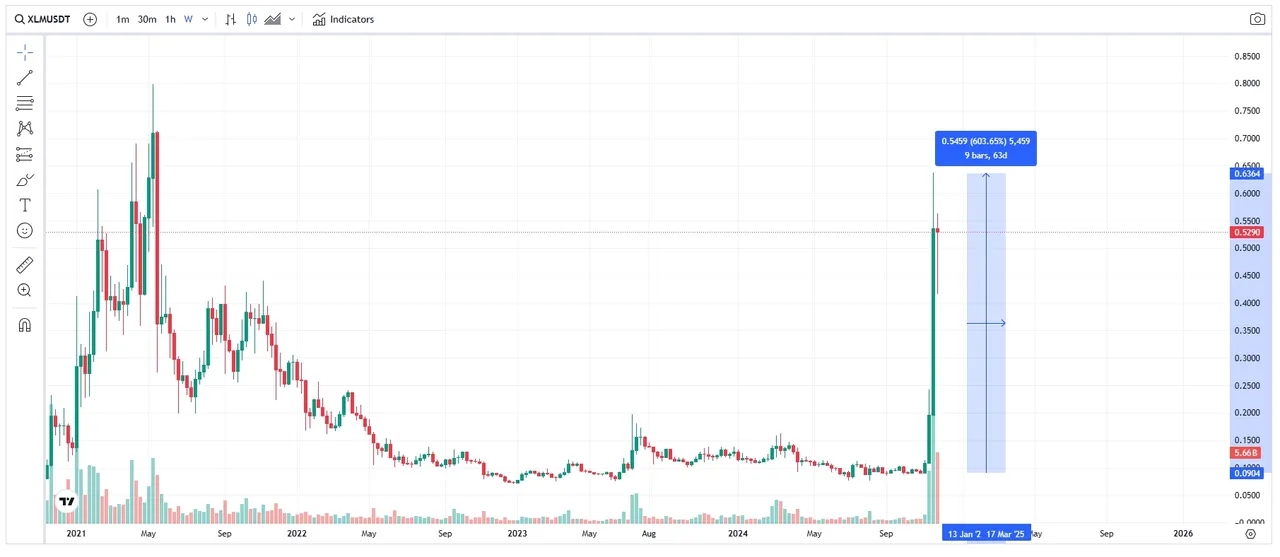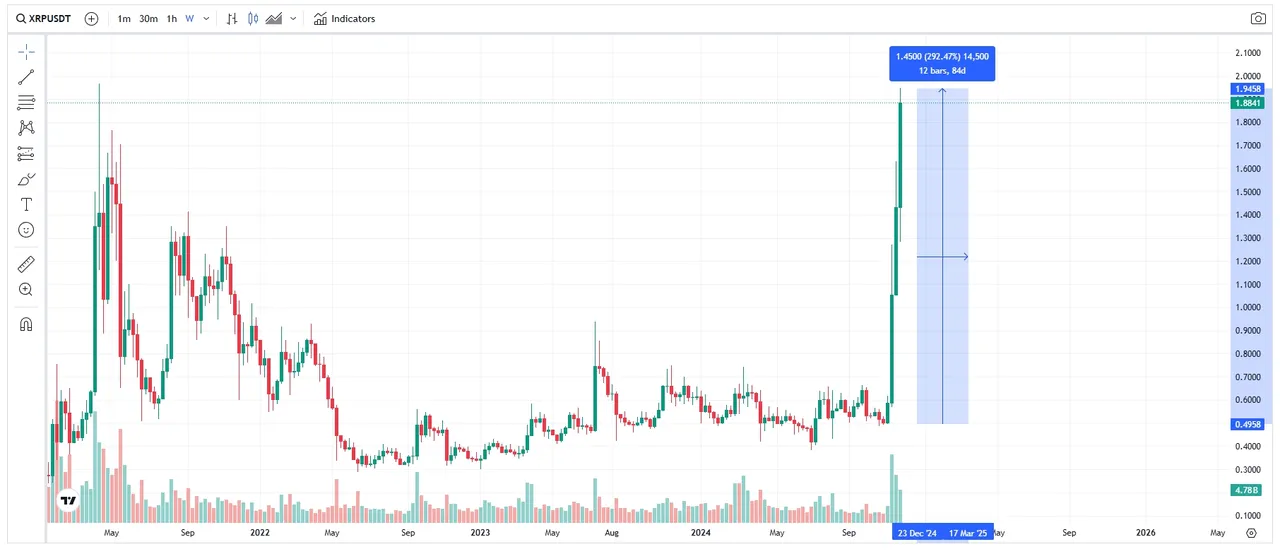
Every market phase requires a change in trading tactics. The bull market phase is vastly different from the accumulation phase, with significant distinctions. Inexperienced market participants often make critical mistakes. This article will examine some of them.
Taking Profits at 20-30-50% Gains
This approach is illogical. In this market phase, assets demonstrate impulsive growth of 200-300-500% in weekly candlesticks. Such cryptocurrencies also tend to have high liquidity. Examples include XRP (300%) and XLM (600%).

XLM +600%

XRP +300%
Less liquid cryptocurrencies are much more likely to show greater growth because they are easier to manipulate.
Not Selling an Asset After Such Growth
This is also illogical. Failing to take profits during such impulsive movements is a mistake. No one suggests selling your entire position—certainly not. However, for instance, selling 30% of a previously acquired position allows you to at least recoup your initial investment, secure some profit, and relieve yourself of a significant portion of the psychological burden.
Investing Your Entire Deposit in a Single Crypto Project
This is arguably the biggest mistake a trader can make. Right now (November-December 2024), we are experiencing altseason. Cryptocurrencies are showing strong impulsive movements one after another—today it’s one project, tomorrow it’s another.
If you invest everything in a single asset and it doesn’t perform, you’ll watch as everything else around you turns green—except your project. This often leads to frustration, causing you to sell and buy something else. And as it often happens, the project you sold starts to grow, while the one you just bought does not.
A more rational approach would be to allocate your planned budget across multiple projects. The exact distribution will vary depending on individual circumstances.
Re-entering a Cryptocurrency After Selling It, Significantly Increasing the Average Entry Price
It’s important to understand that endless price growth doesn’t exist—markets are cyclical, and prolonged price increases are always followed by extended declines. If you’ve sold an asset, re-entering should either be at or below the initial purchase price, or you should forget about that asset for several years and look for something that hasn’t yet shown price growth.
Entering Assets After Pump
This is a common issue for beginners. Many people think that if something has risen sharply, it will continue to grow indefinitely, but why would that be the case?! (Refer to the previous point). Market psychology works as follows: if something is very cheap, it’s considered a scam (remember DOGE in 2019-2020—an unwanted meme at a very low price). However, if that "scam" increases in price by thousands of percent, it’s suddenly viewed as a promising asset (DOGE in 2022 at 70 cents, after a 20,000% rise—pure madness). What happens after such a rise? — Correct, a long-term price decline of the once-promising "token."

DOGE +20 000%
I’ve outlined the basic and most common mistakes made by both beginners and traders with some experience. Don’t make foolish mistakes. Plan your actions in advance—know where you’ll buy and sell, learn to manage risks, and most importantly, control your greed, and happiness will follow.